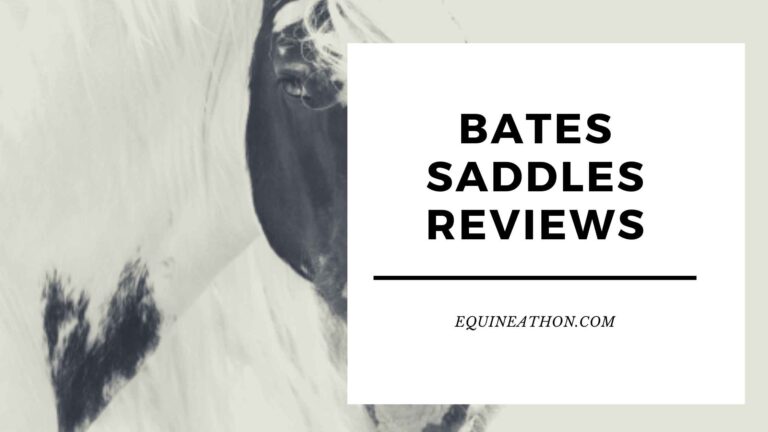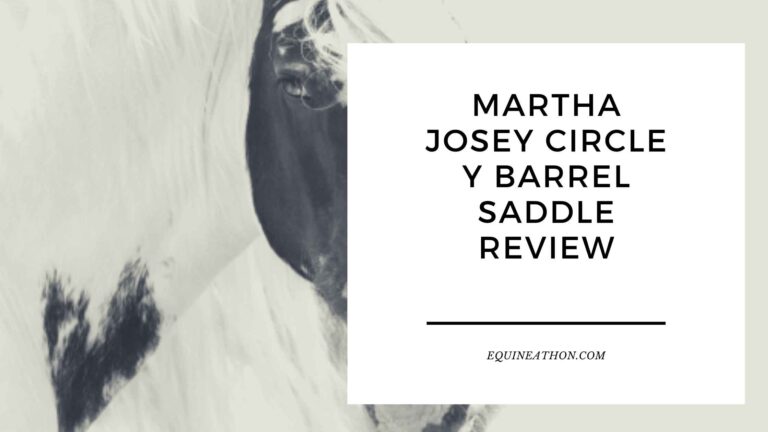Used Roping Saddles for Sales & Where to Buy
Roping saddles, known for their robust build and tailored design for roping cattle, are essential tools for ranchers, rodeo professionals, and hobbyists.
As the equestrian market evolves, there’s a rising demand for used roping saddles, offering both financial and environmental benefits.
This article delves deep into why purchasing a used roping saddle can be a savvy choice, and how to ensure you find the right saddle for your needs.
1. Why Consider Used Roping Saddles?
Cost-Effective: New roping saddles, given their specialized design and durable materials, can come with a hefty price tag. Opting for a used saddle allows you to potentially acquire a high-quality item at a fraction of the cost of a new one.
Eco-Friendly: Purchasing used items is an eco-conscious choice. By giving a second life to a saddle, you are directly reducing the demand for new production, promoting sustainability in the equestrian industry.
Pre-Broken-In Feel: New saddles require a break-in period to become comfortable. A used saddle often offers a comfortable, pre-worn feel from the get-go, benefiting both the rider and the horse.
2. Finding the Right Used Roping Saddle
Establish Your Needs: Determine what you need in terms of size, design, and specific features. Are you looking for a saddle for competitive roping or more casual use? Knowing what you want will streamline your search.
Research Brands: Some saddle brands are renowned for their quality, longevity, and craftsmanship. Before purchasing, investigate the reputation and reviews of various brands.
Inspect Before Buying: Always inspect a used saddle thoroughly. Check for wear and tear, especially in stress areas like the stirrup leathers, the rigging, and the tree.
Consult Experts: If you’re unsure about a particular saddle’s fit or quality, consulting an expert or saddler can be invaluable. They can offer insights that might not be immediately obvious to an untrained eye.
3. Tips for a Safe Purchase
Online Platforms: Websites specializing in equestrian equipment or broader platforms like eBay often have listings for used roping saddles. When buying online, ensure that the seller provides detailed photos, clear descriptions, and ideally, a return policy.
Local Tack Shops: Many local tack shops have bulletin boards or sections dedicated to used gear. Here, you have the added benefit of physically inspecting the saddle before purchasing.
Networking: The equestrian community thrives on networking. Attend roping events, rodeos, or local equestrian meet-ups. Engage with fellow enthusiasts; they might have leads on saddles for sale or know someone who does.
Check Return Policies: If possible, ensure there’s a return policy. Especially when purchasing online, having the option to return a saddle that doesn’t fit or meet your expectations can save you both time and money.
4. The Final Wrap-Up
A roping saddle is a significant investment, both in terms of its cost and the function it serves. While the allure of a brand-new saddle is undeniable, the used market offers opportunities that are hard to overlook.
By being thorough in your research, networking, and inspection, you can find a quality used roping saddle that meets your needs without breaking the bank.
Whether you’re a seasoned roper or a novice, the right saddle can significantly enhance your roping experience. Remember, it’s not always about the age of the saddle, but its quality, fit, and how well it suits your needs.
ALSO SEE: Used Barrel Saddles for Sale

FAQs: Used Roping Saddles for Sale
- Why should I consider buying a used roping saddle?
- Purchasing a used roping saddle is cost-effective, eco-friendly, and often provides a pre-broken-in feel for added comfort.
- What’s the primary advantage of buying used over new?
- One primary advantage is cost savings. Quality new roping saddles can be expensive, and buying used allows for significant discounts.
- Are used saddles eco-friendly?
- Yes, buying used promotes sustainability by reducing the demand for new production and giving items a second life.
- Do used saddles require a break-in period?
- Typically, used saddles are already broken in, providing immediate comfort compared to new saddles.
- How do I determine the right size for a roping saddle?
- It’s essential to know both your measurements and your horse’s. Consulting a saddle fitting guide or an expert can be beneficial.
- Which brands of roping saddles are the most reputable?
- The article suggests researching various brands and their reviews to determine their reputation.
- Where can I physically inspect used saddles before buying?
- Local tack shops often have sections dedicated to used gear, allowing for physical inspection.
- How can I ensure a used saddle’s quality online?
- Look for listings with detailed photos, clear descriptions, and, if possible, a return policy.
- Are there specific areas of a saddle I should inspect closely?
- Yes, check for wear and tear in areas like the stirrup leathers, the rigging, and the tree.
- Can I consult someone about a saddle’s fit?
- Absolutely. Consulting a saddler or an expert in the field can provide insights into a saddle’s fit and quality.
- Which online platforms are best for purchasing used roping saddles?
- Equestrian-specific websites or broader platforms like eBay are options. Ensure the seller is reputable and offers clarity on the product.
- Is networking beneficial when looking for a used saddle?
- Yes, attending equestrian events or local meet-ups can help you connect with potential sellers or get leads on available saddles.
- Do most used saddles come with a return policy?
- It varies. When buying, especially online, it’s advantageous to opt for sellers that provide a return policy.
- How does a return policy benefit me when purchasing a used saddle?
- If the saddle doesn’t fit or meet your expectations, a return policy allows you to recover your costs without hassle.
- Is age a critical factor when considering a used saddle?
- Not necessarily. The saddle’s quality, fit, and how well it suits your needs are more crucial than its age.
- How do I maintain a used roping saddle?
- Regular cleaning, conditioning, and checking for wear and tear will help prolong the saddle’s lifespan.
- Is there a difference between saddles for competitive roping and casual use?
- Yes, saddles tailored for competitive roping may have features specific to the sport’s demands. Know your requirements before purchasing.
- Can I renegotiate the price of a used saddle?
- It’s possible, especially if buying directly from an individual. Doing thorough research can give you a better idea of the saddle’s market value.
- Is the equestrian community open to newcomers seeking advice on purchasing used saddles?
- Generally, yes. Many in the community appreciate networking and sharing their insights.
- How do I ensure the saddle fits my horse?
- Just as with rider fit, consulting a saddler or using a saddle fitting guide for your horse can be invaluable.
- How often should I inspect my used saddle for wear and tear?
- Regular checks, especially after intense use, can help identify and address potential issues early on.
- Can a used saddle’s lifespan match that of a new one?
- With proper care and maintenance, a quality used saddle can have a lifespan comparable to a new one.
- What’s the environmental impact of producing new saddles?
- New production requires raw materials and energy, leading to carbon emissions. Buying used reduces the demand for these processes.
- Do all used saddles come pre-broken-in?
- While many do, it varies based on the saddle’s age and previous use.
- Can I find specialized roping saddles in the used market?
- Yes, the used market can offer a range of specialized saddles, from competitive roping designs to more general ones.
- How do I disinfect a used saddle?
- Using saddle soap and specific leather disinfectants can help ensure your used saddle is clean and safe.
- Should I be wary of extremely cheap used saddles?
- While deals exist, excessively low prices may indicate potential issues or lack of quality. Always inspect and research before purchasing.
- Can I find used saddles from recent collections?
- Yes, the used market often has saddles from various years, including more recent models.
- Is it easier to find accessories for used saddles?
- It depends on the saddle’s brand and model. However, many general roping accessories are compatible across various saddles.
- How do I know if a used saddle’s tree is in good condition?
- Inspecting the saddle physically, feeling for any irregularities, or consulting an expert can help determine the tree’s condition.
- Are used saddles suitable for beginners?
- Absolutely. With proper research and consultation, beginners can find used saddles that are both affordable and of good quality.
- Why are roping saddles designed differently than other saddles?
- Roping saddles are tailored for the demands of roping cattle, with features that support this activity.
- Can I customize a used roping saddle?
- Yes, many aspects of a saddle can be customized or adjusted, from the stirrups to the padding.
- Do local tack shops offer warranties on used saddles?
- Policies vary by shop. It’s beneficial to inquire about warranties or guarantees when purchasing.
- How do I repair minor damage on a used saddle?
- For minor repairs, saddle maintenance kits are available. For significant issues, consulting a saddlery expert is recommended.
- Is the history of a used saddle essential?
- While not always available, knowing a saddle’s history can provide insights into its usage and care.
- Do I need special tools to adjust or maintain a used roping saddle?
- Basic saddle maintenance requires minimal tools, but specific adjustments or repairs may need specialized equipment.
- Can a used roping saddle be used for other equestrian activities?
- While designed for roping, many riders use them for general ranch work or trail riding. However, they may not be suitable for specialized activities like dressage.
- How do I store a used roping saddle to ensure its longevity?
- Store in a cool, dry place away from direct sunlight. Regular cleaning and conditioning will also help prolong its life.
- Is it possible to trade-in my current saddle for a used one?
- Some tack shops or online platforms may offer trade-in options, where you can exchange your current saddle towards the purchase of another.







